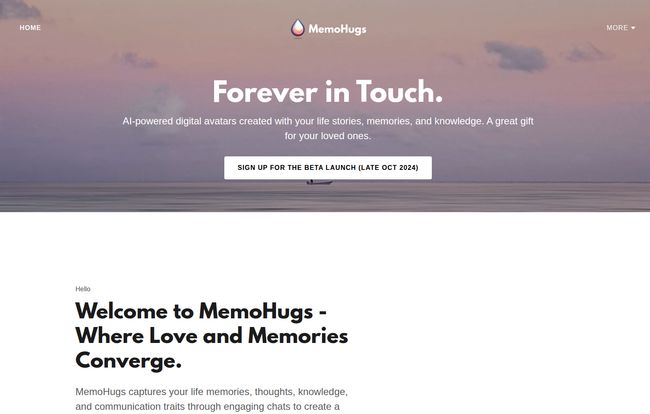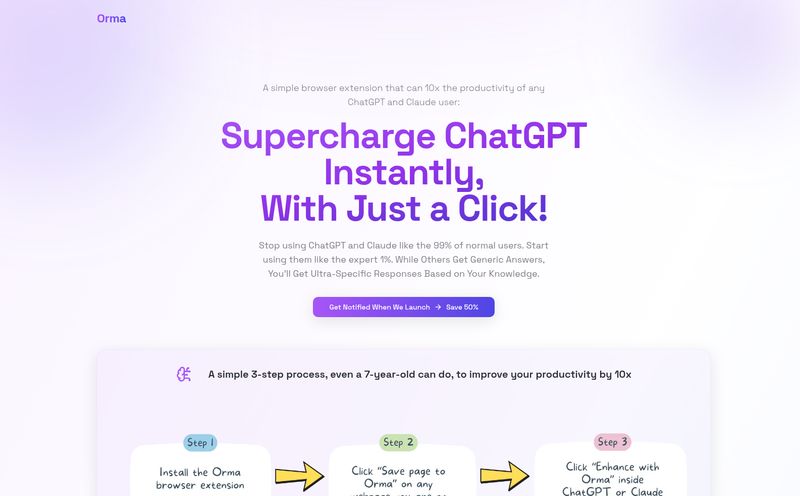I was cleaning out my attic the other day—a sentence that usually precedes a story about finding a dusty yearbook or a box of old baseball cards. For me, it was a shoebox full of my grandmother’s letters. Her handwriting, a beautiful, looping cursive, told stories of her youth, her hopes, her everyday frustrations. And it hit me, not for the first time, how much of a person is lost when they’re gone. The stories that never made it to paper, the specific way she’d tell a joke, the cadence of her advice. It’s all just… gone.
We have photos. We have videos. But those are static moments. They’re records, not conversations. So when I stumbled across a new platform called MemoHugs, the concept immediately grabbed me by the collar. The tagline is “Forever in Touch.” A bold claim. The idea? To create an AI-powered digital avatar of a person, built from their memories, stories, and personality, that you can interact with.
Yeah, it sounds like an episode of Black Mirror. I was equal parts intrigued and deeply skeptical. Is this the next evolution in how we remember, or just a step into the uncanny valley we’re not ready for? Let's get into it.
So, What Exactly Is MemoHugs Supposed to Be?
At its core, MemoHugs isn't just about storing information. It’s about creating an interactive echo of a person. Forget dusty photo albums or silent home movies. Think of it more like a living, breathing library of a single human being. The platform’s goal is to capture the essence of someone—their memories, knowledge, communication style, and even their humor—through a series of engaging chats and uploaded documents. It then uses all that data to build a personalized AI avatar.
This isn't just a chatbot that can recite facts from a person's life. It’s designed to mimic their personality, offering advice, sharing stories, and providing a sense of connection that goes far beyond a simple Q&A. A digital legacy that talks back. It's a heavy concept, for sure.

Visit MemoHugs
How It Works: From Memory to Machine
The process, as I understand it, is a two-part dance between human input and artificial intelligence. It's not magic, it's data. But the way they frame it is pretty interesting.
The Great Story Harvest
First, you have to feed the machine. MemoHugs prompts you (or your loved one) to share life stories, thoughts, and knowledge through what they call “engaging conversations.” This is the foundation of the whole thing. You can also upload existing materials—think old letters (like my grandma’s!), journals, photos, videos, you name it. This collection becomes what they term a “biography dataset.” The quality here is everything. If the input is shallow, the resulting avatar will be too. Garbage in, garbage out, as the old programming mantra goes. This is probably its biggest dependency.
Building Your Digital Echo
Once the dataset is rich enough, the AI gets to work. It analyzes the language, the sentiments, the stories, and the communication patterns to build the interactive avatar. The goal is for the avatar to not just know what the person knew, but to communicate like them. This includes text and voice support, which really ups the ante on the whole experience.
The Features That Actually Matter
A lot of tech platforms are just a bundle of features looking for a problem. But the features listed for MemoHugs feel very… intentional. They’re all aimed at one thing: creating a believable and meaningful connection.
More Than a Chatbot, It's an Emotional Connection
The interactive chatting is the main event. The ability to ask your grandfather’s avatar for advice, hear your mother’s favorite story in her 'voice,' or just have a comforting text exchange is the promise here. For someone grappling with loss, the idea of an avatar offering comfort and remembrance is a powerful one. Of course, this is also where things could get ethically murky, a topic that ‘grief tech’ experts are already debating.
Preserving a Legacy, Not Just Facts
I really like the distinction between Legacy Preservation and Life Story Collection. It's not just about creating a historical record. It's about ensuring those intangible parts of a person—their wisdom, their experiences, their personality—are available for future generations. Imagine being able to introduce your kids to the great-grandparent they never met, not through a photo, but through a conversation. That's a powerful idea.
The Resident Expert You Can Always Call On
Here’s an angle I didn’t expect: Knowledge and Expertise Sharing. You can create an avatar that reflects a person’s professional expertise. Think of a master craftsman whose skills could be preserved, a brilliant scientist whose thought processes could be studied, or a family doctor whose bedside manner could continue to comfort. This moves MemoHugs from a purely personal, emotional tool to something with practical, educational applications.
Okay, Let's Address the Sci-Fi Elephant in the Room
As an SEO and tech guy, I’m optimistic about innovation. But I’ve also seen enough to be healthily skeptical. There are some big questions here that can’t be ignored.
The Uncanny Valley of Personality
My biggest hesitation is this: can an AI truly replicate a personality? It can mimic patterns, sure. It can recall facts perfectly. But can it capture the spark? The irrational quirks, the unexpected moments of wit, the warmth that makes a person them. There's a real risk of creating something that's almost right, which can be more jarring than something that’s completely different. It has their data, but does it have their spirit? I'm not so sure.
The Privacy Minefield
We’re talking about creating a dataset of a person’s most intimate memories, thoughts and feelings. The privacy implications are massive. Who owns this data? How is it secured? What happens to the avatar after the subscription ends? These are not small details; they are fundamental questions of digital identity and security. Any company entering this space needs to have iron-clad, transparent answers. Given that they're in Beta, I hope they're spending a lot of time on this.
Who Is This Actually For?
Despite my reservations, I can see a clear audience for this. It could be an incredibly profound gift for a loved one, especially for someone in their later years who wants to pass their story on. It's for families who want to preserve the memory of their elders in a dynamic way. It’s for individuals who, like the ancient pharaohs building their tombs, want to create a monument to their life. A living monument. The kind of work done by organizations like StoryCorps is so important, and this feels like a technological extension of that human impulse to share and preserve.
Pricing and How to Sign Up
Right now, you can’t just buy MemoHugs. The platform is getting ready for a Beta Launch in Late October 2024. As such, there's no public pricing information available yet, which is pretty standard for a product at this stage. If you're intrigued, you can head over to their website and sign up for the beta launch. This gives you a chance to be one of the first to try it out and, presumably, provide feedback that will shape its future.
My Final Take on MemoHugs
So, where do I land? MemoHugs is ambitious. It's walking a fine line between being a beautiful tool for connection and something a little… unsettling. It taps into a fundamental human fear—the fear of being forgotten—and offers a very 21st-century solution.
I don’t think this will ever replace the shoebox of letters in my attic. There's a magic to the physical artifacts of a life. But could it supplement them? Could it provide a new, interactive layer of remembrance? Absolutely. For the right person, and with the right expectations, MemoHugs could be a deeply meaningful tool. It’s not about cheating death, but about changing the way we remember life. And that’s a conversation worth having.
Frequently Asked Questions
What is MemoHugs in simple terms?
MemoHugs is a platform that creates a personalized AI avatar based on a person's life stories, memories, and personality. Loved ones can then interact with this digital avatar through text and voice chat to feel a continued connection.
How does MemoHugs get my memories?
The platform collects information in two main ways: through guided, conversational chats where you share stories and thoughts, and by allowing you to upload digital files like documents, photos, letters, and videos.
Can you actually talk to the AI avatar?
Yes. The platform supports both text-based and voice-based interactive chatting, aiming to simulate a real conversation with the person's digital likeness.
Is MemoHugs available to use now?
No, not for the general public. MemoHugs is currently preparing for a Beta Launch scheduled for late October 2024. You can sign up on their website to be notified and potentially participate.
What about privacy with such personal data?
This is a significant concern. The platform relies on a deep dataset of personal information. While MemoHugs hasn't detailed its full privacy policy yet, potential users should be mindful of data security and ownership when considering such services.
Will the AI avatar be a perfect replica of the person?
It's unlikely to be a 'perfect' 1:1 copy. The AI's goal is to mimic personality and knowledge based on the data provided. However, it will still be a simulation and may not capture every nuance of the real individual. Its quality is highly dependent on the quality and quantity of the input data.
Reference and Sources
- MemoHugs Official Website: https://www.memohugs.com/
- Wired: "The Unsettling Future of 'Grief Tech'" - https://www.wired.com/story/digital-grief-tech-ethics/
- StoryCorps Mission: https://storycorps.org/



